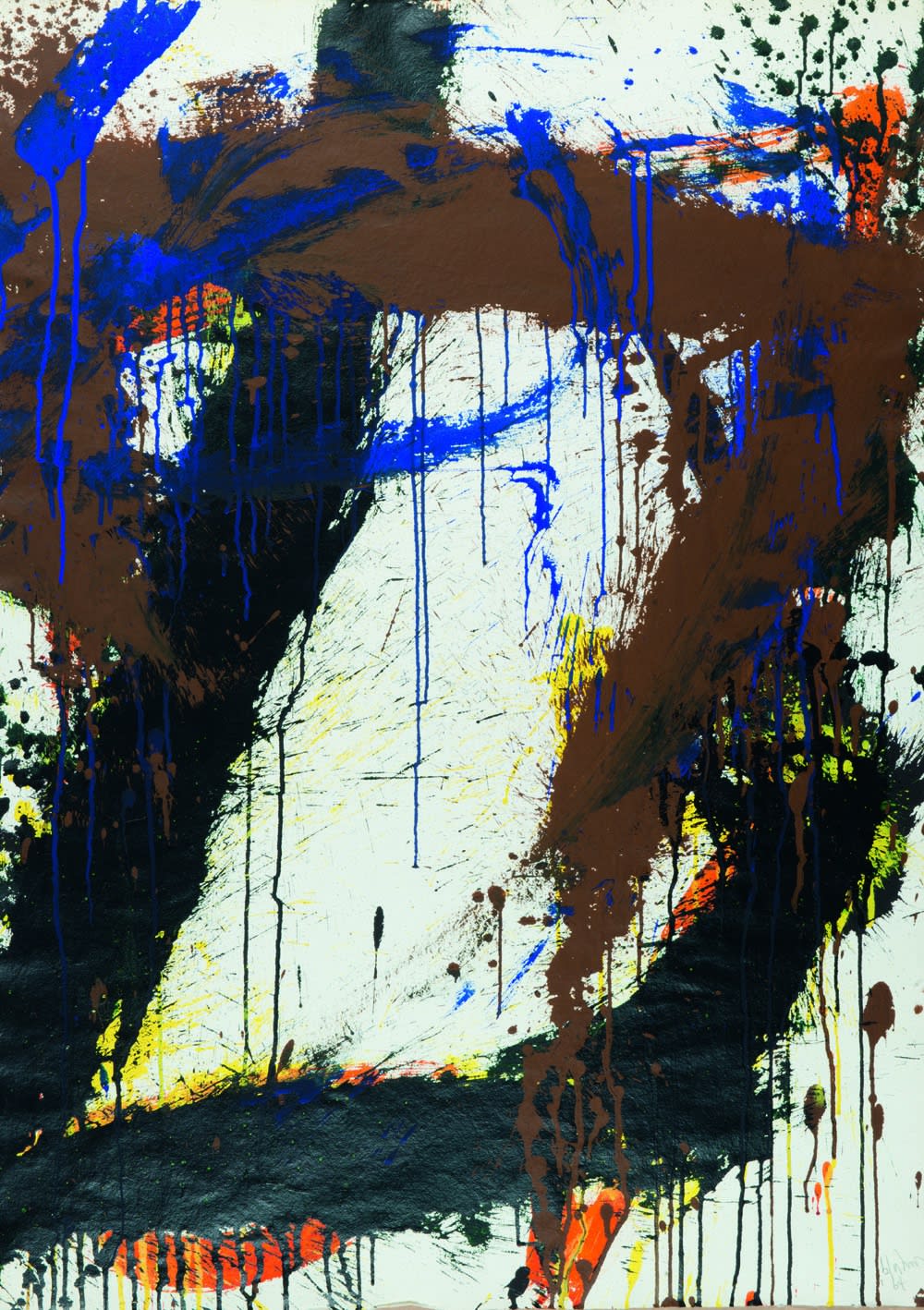
One of the most innovative artists associated with Abstract Expressionism, Bluhm’s work fell into relative obscurity over the past two decades. Two major reasons are his multifaceted style, which has made his work difficult to categorise, and the fact that a leading dealer did not champion him during his lifetime. But attention to his work is gaining much momentum, with major exhibitions taking place recent years. The quality of Bluhm’s work certainly deserves much greater recognition, and, in our opinion, his paintings are undervalued compared to his contemporaries and friends.
In a career spanning six decades, Bluhm essentially produced four bodies of work, from his Surrealist-inspired figurative paintings of the 1940s to his large-scale, almost diagrammatic paintings of the 1990s. During 1959 -1963 he embraced an open and gestural style that resonated with the New York School, but remained resolutely his own. It was also at this time that Bluhm started showing at Leo Castelli Gallery, launching his career in earnest.
At the age of 16 Bluhm became Mies van der Rohe’s youngest student at the Armour Institute of Technology, where he studied Bauhaus architecture. Following the Japanese attack on Pearl Harbour, at the age of 20 he enlisted in the army as a bomber pilot, flying in 44 missions until he was sent home severely wounded. WWII profoundly affected Bluhm, as it did many artists of his generation. He did not return to his architectural training and instead went to study art in Paris, with aid from the GI Bill, where he was instantly integrated into the dynamic artistic scene, sharing a studio with Sam Francis and meeting figures such as Giacometti, Cocteau and Riopelle. Bluhm became very close with Matisse's son-in-law, Georges Duthuit, and it was his wife, Matisse's daughter Marguerite, who purchased Bluhm's first paintings in Paris.
Following a divorce, Bluhm returned to the United States in 1956, fatefully the year of Pollock's death, which was also the year of the seminal Jackson Pollock memorial retrospective at MOMA. This exhibition undoubtedly had a great impact on Bluhm, who went on to frequently spend time at the Cedar Tavern with artists who were establishing the New York School. Upon his relocation to America, Bluhm rejected the aesthetic of the École de Paris altogether and instead devoted himself exclusively to De Kooning and Pollock as his main sources of inspiration. Like Sam Francis and Pollock, Bluhm championed the all-over technique of painting, conveying vigorous painterly rhythms in his work through gestural abstraction.
Given his originality and prominent position amongst the second generation of Abstract Expressionist painters, Bluhm’s paintings are still a relative bargain. His works from the late 1950s and early 1960s command the highest prices at auction; indeed, his top prices of $1.14m and $722,000 were achieved by two works from 1959 and the fourteen prices that follow were for works painted before 1964.
Bluhm’s work can be found in numerous major public collections, including the Metropolitan Museum of Art, Smithsonian American Art Museum, Hirshhorn Museum and Sculpture Garden, Harvard University Art Museums, Cleveland Museum of Art, Addison Gallery of American Art and Ball State Museum of Art in Indiana. Galerie Stadler held solo exhibitions of Bluhm's work in 1968, 1970, 1972, 1982 and 1988.